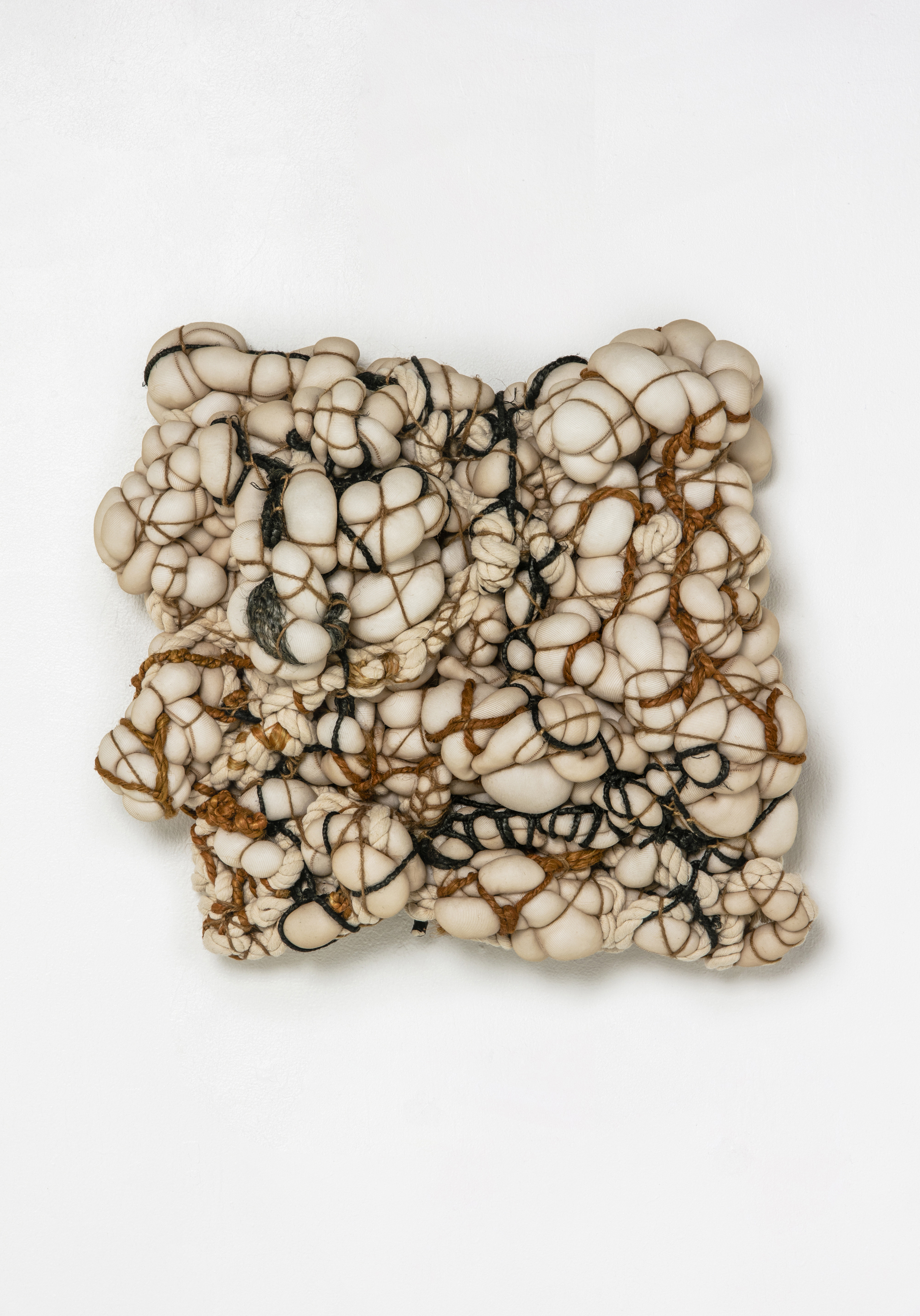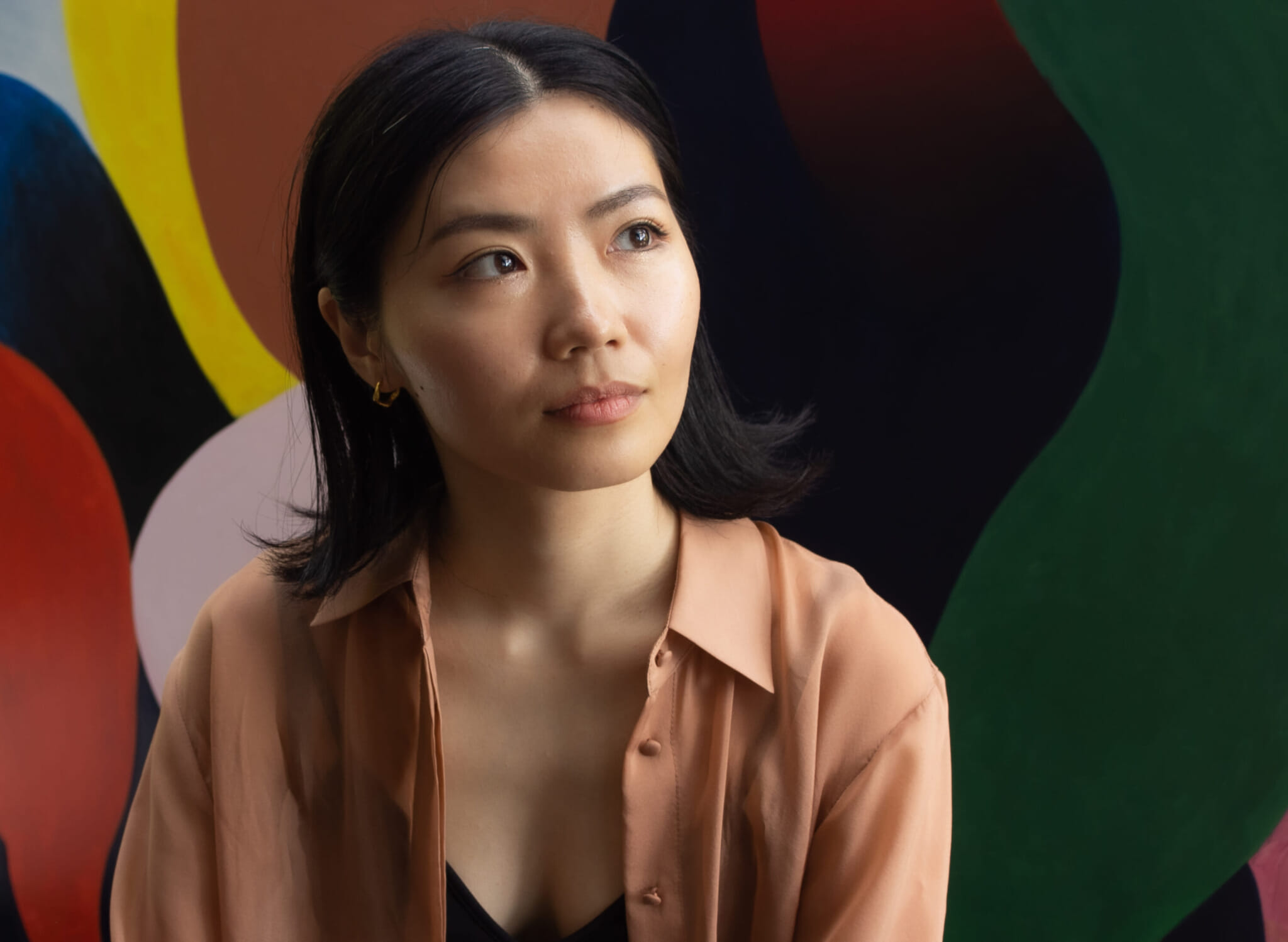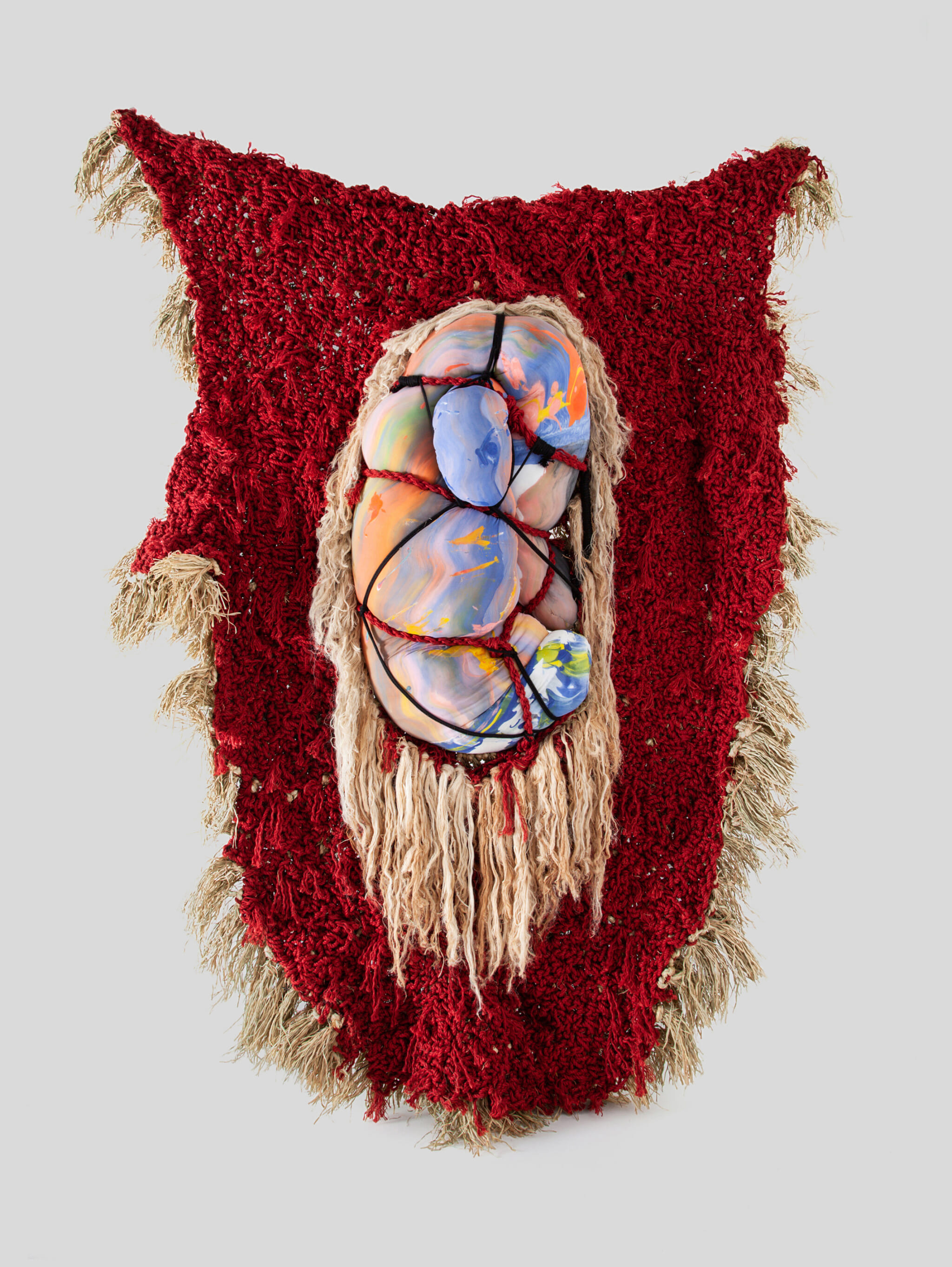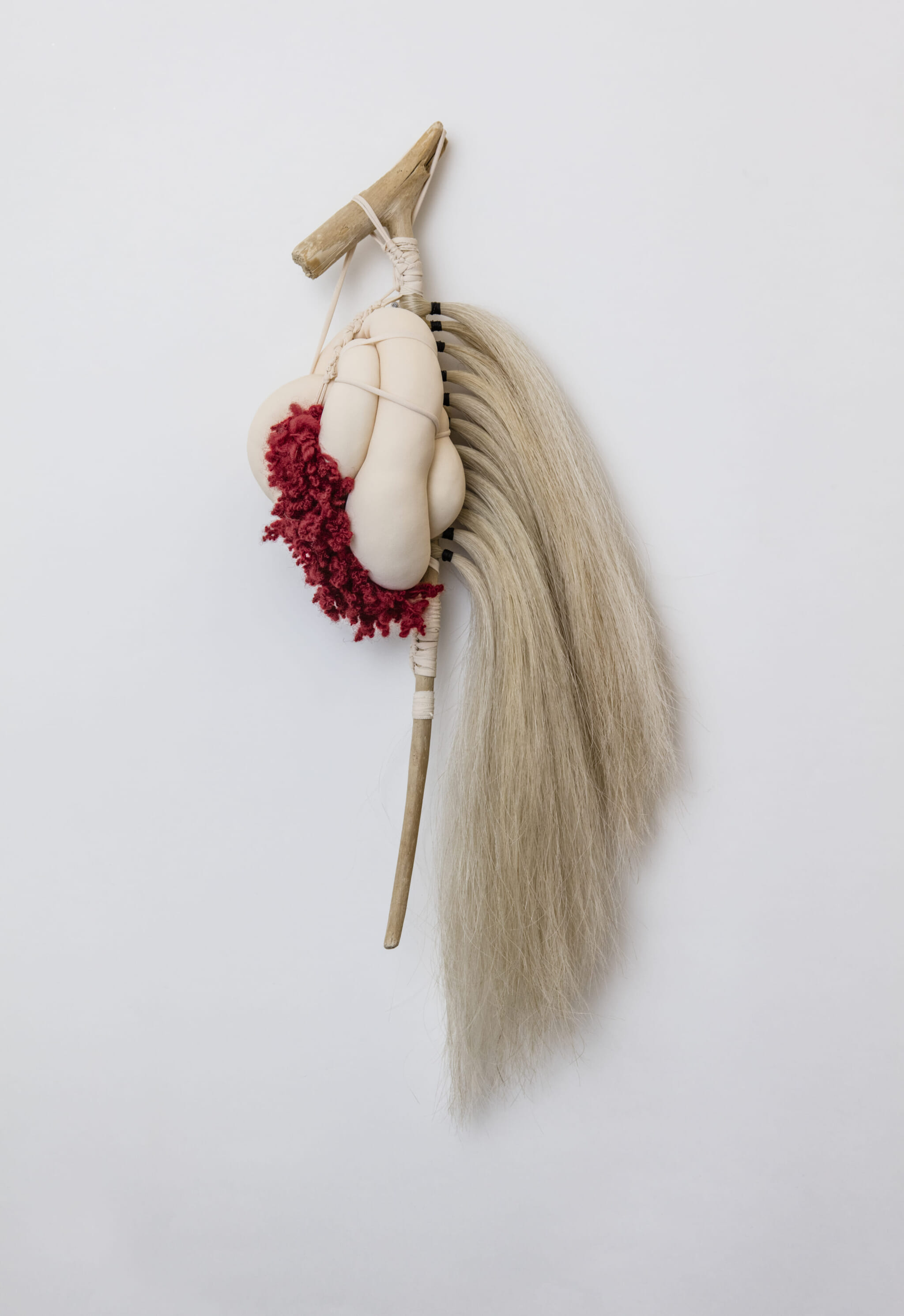Akari Uragami creates soft sculptures that are simultaneously beautiful and grotesque. Her soft sculptures use materials including pantyhose, aranawa (a type of straw rope) and fishing net. She also paints, using deep, graded colors and rounded, abstract shapes.
Trained at one of Japan’s most prestigious art schools, Uragami has exhibited her works in Europe, the US and Asia, and painted murals in cities like Tokyo and Manchester. She answered some questions from her home studio in Kanagawa’s Kamakura area.
In a past interview, you speak about the moment of realizing when you want to make something. What’s your creative process?
It’s different for both soft sculpture and painting. I often have an idea or a feeling of what I want to make, but with sculpture, I’ll be influenced by materials around me — the shape or form I want it to take, for example. I pick up some driftwood on the beach, and I’ll even collect things from the street. For painting, it’s more a matter of instinct: I’ll pick up a brush and the strokes flow naturally.
What is a material you enjoy working with and why?
Anything elastic. I wanted something to represent the body, especially the female body: soft and bulging, like the folds of skin at our joints, the rolls of fat which make us human. Shapes to represent this appear in my paintings, too. When I was thinking about what material to use, I landed upon elastic items such as pantyhose. It’s the closest I can get to actual human skin, which is my ideal material. Of course, I think that in the future we may be able to use artificial human skin, but for now pantyhose are the closest similarity.

“Components: a piece of us,” 2021: pantyhose, fishing net, cotton, threads, rope
Your works often have specific themes inspired by current events. “Anzen,” your piece for Shibuya Parco was made in response to the coronavirus pandemic. Can you expand on this?
In art, there are so many possible interpretations that I imagine that it is a mirror for the spirit inside us. Our interpretation is a reflection of ourselves, showing us what is inside that we don’t normally see. For this reason, I create artworks that can have many different meanings. For “Anzen,” I combined three things: my personal experience, the situation itself, and Tokyo culture.
In the very middle is a soft, body-like part. It’s inspired — like all my works — by the body and especially the female form. This is tied in place. Some people see ropes and bindings and feel they represent violence, while others see them as a hug of safety, or a feeling of security. Both of these opposing sides or contradictory things coexisting are important for my work, to represent our humanity, and how humans contain multitudes.
I’m not a spiritual person myself, but during the pandemic, it seemed like the whole world was praying, hoping for an end to the pandemic. The back of “Anzen” uses aranawa rope, which is used in traditional contexts throughout Japan. I spent a long time individually tying each bind to portray this feeling of belief.
For the Tokyo culture part, I used scaffolding. Not only is it used as decoration on the top floor of Parco, but there are new buildings being knocked down and built across Tokyo all the time. I think that’s a defining feature of the city — it’s perpetually incomplete.
Find more of Akari Uragami’s work online or on Instagram @akariuragami. Uragami will hold a solo exhibition in Tokyo from November 18 to December 17, 2023, at Laid Bug in Daikanyama.











